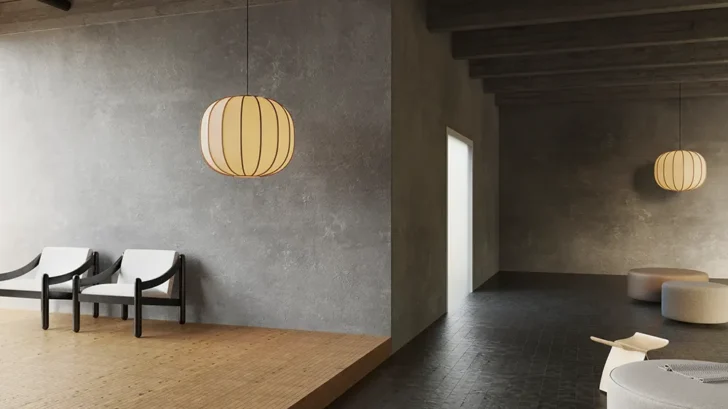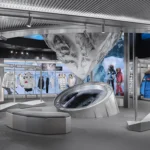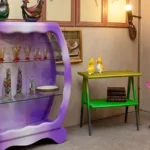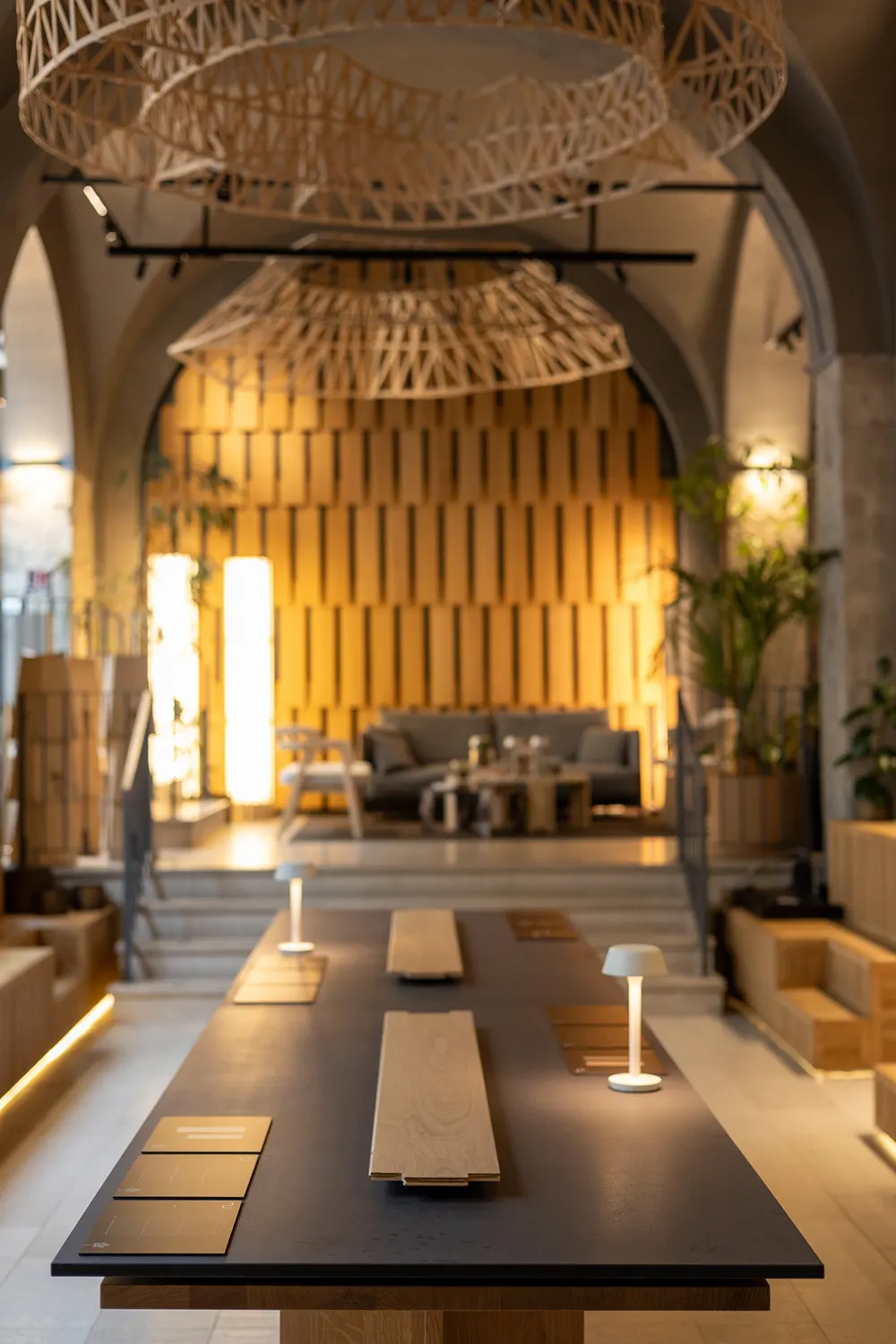
Listone Giordano takes center stage at Milan Design Week 2025 with two new collections Nui by Piero Lissoni and Trafic by Marc Sadler, alongside a multisensory performance titled Haptic. Presented through the Natural Genius series, the collections explore very different references: one rooted in Japanese craftsmanship, the other grounded in historical street surfaces from the 19th century. Yet both reflect the brand’s consistent approach to rethinking wooden flooring with precision and purpose.
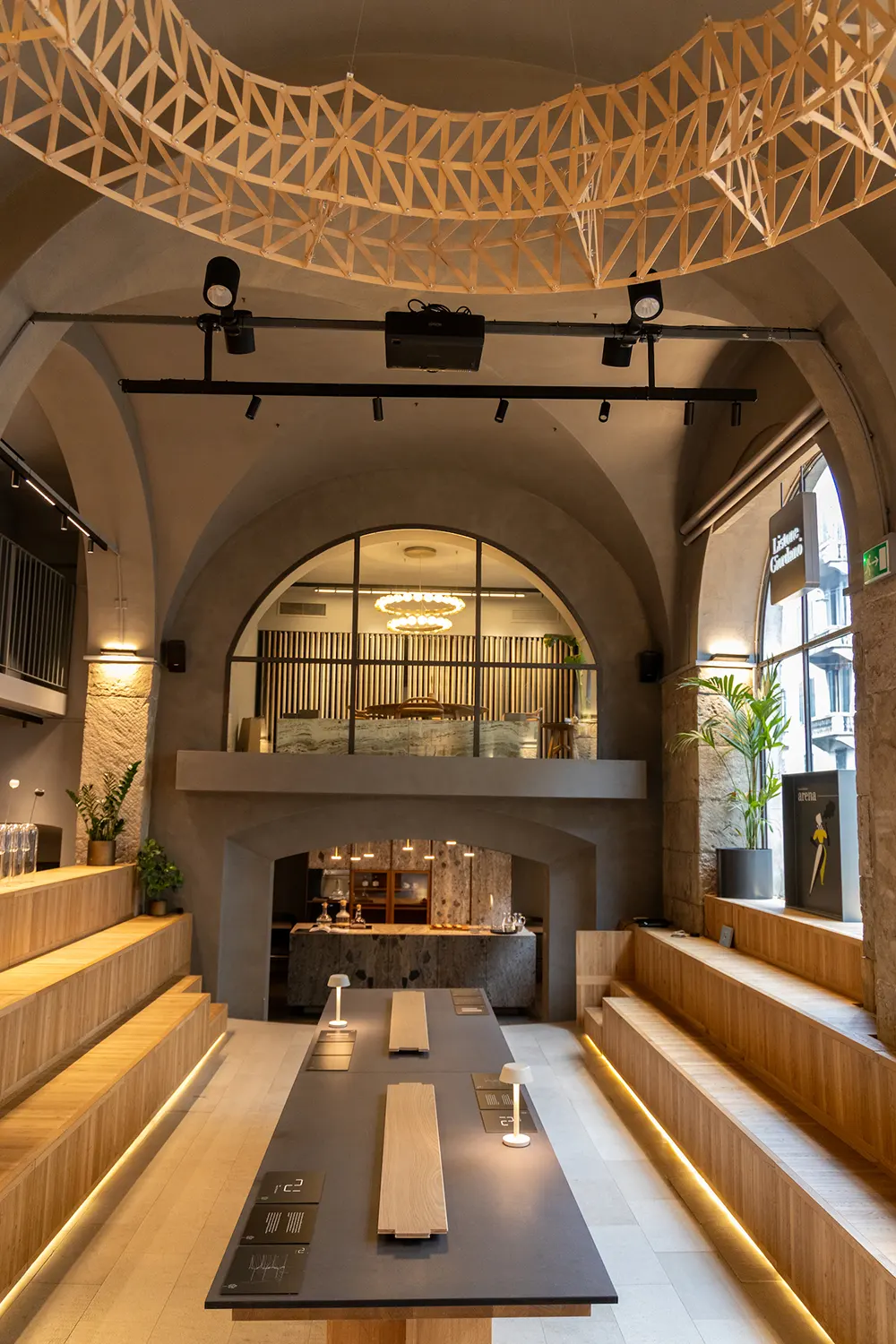
Precision, Connection, and Material Memory
Lissoni’s Nui draws on the Japanese tradition of Sashimono, a dry wood joinery technique. The name comes from the Japanese word for “sewing,” which suits the design’s emphasis on connection. The boards create visual rhythms through the suggestion of stitching, a gesture Lissoni sees as linking the floor to its past life as a tree. “I envisioned this carpenter’s joint as if these trees, laid on the floor, were becoming furniture,” he explains.
The boards come in two distinct configurations: Nui 01, with end-to-end joints forming a linear composition, and Nui 02, where head-to-head joints create a staggered pattern. The options include oak in Civita and Grisaglie tones, as well as ash with a special Graphit finish, which uses upcycled graphite dust, part of the Circular project that reuses industrial waste to create innovative finishes.

Reimagining the Streets Beneath Our Feet
Marc Sadler takes a different route with Trafic, referencing the end-grain wood blocks once used to pave the streets of major cities. This design borrows from 19th-century practices that valued both durability and noise absorption, particularly useful in the age of horse-drawn carriages. Sadler worked closely with Listone Giordano to stabilize end-grain wood and address issues of expansion and contraction, which have long limited its interior application.
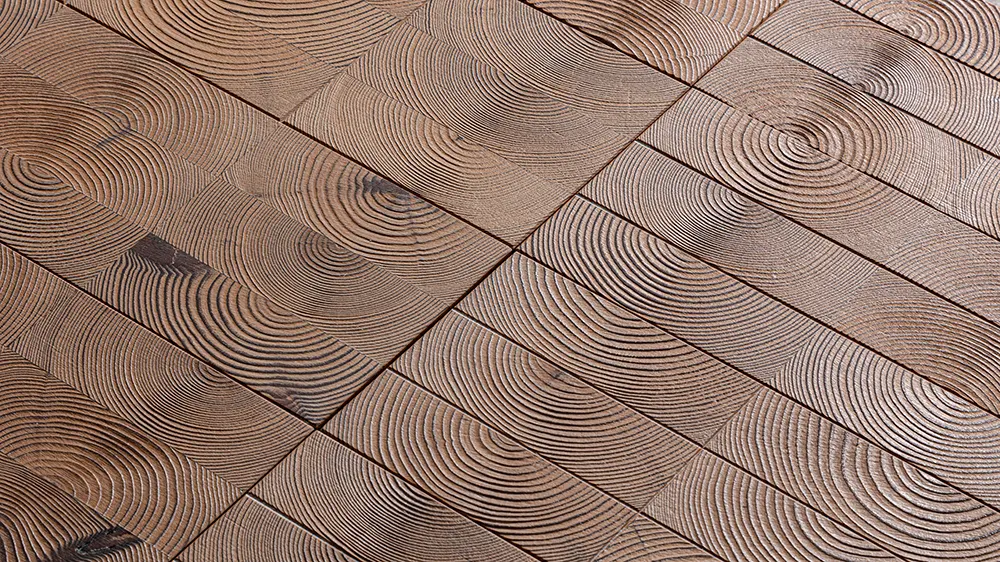
Each tile reveals the grain pattern from a cross-section of the tree, creating a textured field of rings and fibers. Sadler offers four surface treatments, planar, horizontally milled, vertically milled, and cross-milled, and eight colorways, providing options that can suit everything from minimalist interiors to expressive, graphic compositions. “This flooring becomes a new language for anyone willing to experiment,” he says.
Brand Manager Andrea Margaritelli draws a connection between the past and present. He sees Trafic as a reminder of the urban environments that shaped modern life, from Paris to New York. Yet this reinterpretation, he notes, also looks ahead: “Technology and environmental respect must coexist and advance together. On the same roads.”

Haptic Soundscapes
In addition to the two collections, Listone Giordano presents Haptic on April 9 at the Listone Giordano Arena. Created in collaboration with composer Federico Ortica, Haptic transforms wooden surfaces into sound tools through a guided improvisational format called Conduction. Developed by Butch Morris, this technique lets a conductor use hand signals to direct musicians in real time.
For Haptic, fifteen participants will act as musician-performers, interpreting gestures from the conductor to create a shifting, layered audio experience. The sound will move between processed wooden tones and ambient natural recordings, building an evolving composition that shifts based on the conductor’s cues.

The performance connects back to the core of Listone Giordano’s philosophy: treating wood as a living medium. By using tactile surfaces to produce sound, Haptic blurs the boundary between object and instrument. This experience doesn’t rely on traditional notation. Instead, it creates a shared vocabulary that bridges genres and musical backgrounds through a real-time exchange of movement and sound.
